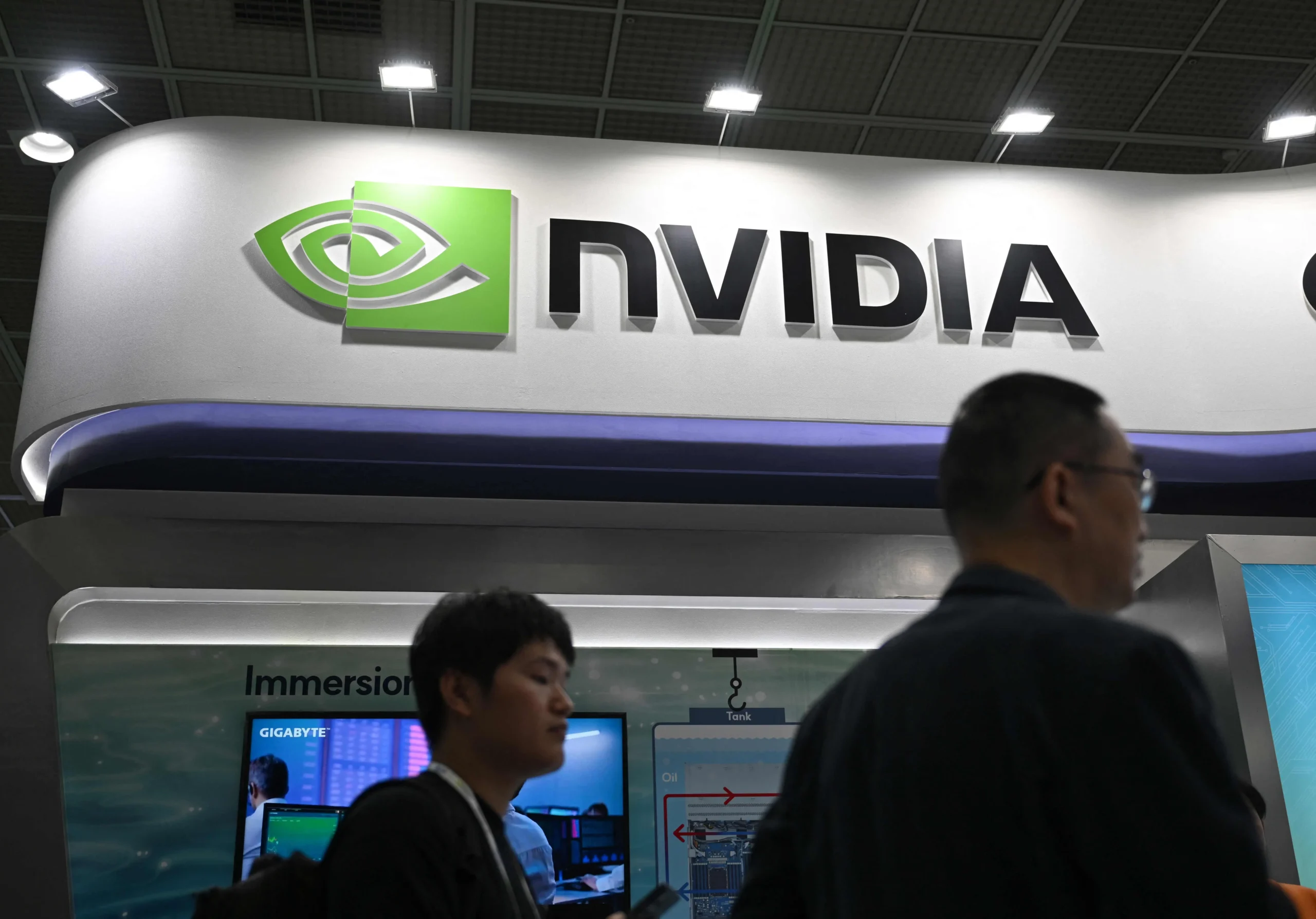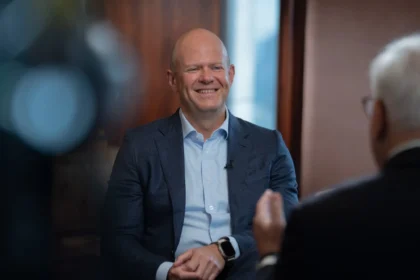For more than a year, Nvidia has acted as the gravitational center of the stock market — the engine of the AI boom, the barometer of tech sentiment, and the company whose earnings alone could swing trillions in global equity valuations. But this time, something different happened: Nvidia’s latest earnings blowout didn’t rescue the broader market.
- 1. AI Enthusiasm Is High — But Expectations Are Even Higher
- 2. AI Costs Are Rising Faster Than AI Revenues
- 3. Macro Forces Are Weighting Down the Market
- 4. Nvidia Is a Winner—But AI Is Becoming a Stock Picker’s Market
- Phase 1: The Hardware Gold Rush
- Phase 2: Cloud Platforms Monetize AI
- Phase 3: Enterprise AI Transformation
- 1. GPU Supply Reaching Maturity
- 2. The Rise of AI Cost Discipline
- 3. A Shakeout Among AI Pretenders
- 4. AI Infrastructure Bottlenecks Beyond Chips
- 5. The Next Nvidia? Investors Are Looking Downstream
- The easy upside is gone — the smart upside is ahead.
- 1. Expect AI to become a stock picker’s trade, not a momentum wave
- 2. Don’t assume every company benefits from AI
- 3. Focus on real revenue, not AI rhetoric
- 4. Watch for AI adoption inflection points in major industries
Despite another quarter of blockbuster results, record-breaking revenue, and stunning demand for AI accelerators, stocks continued to wobble. Investors cheered Nvidia’s numbers, but the enthusiasm failed to ignite the same market-wide rally that defined earlier phases of the AI trade.
It’s a turning point — not because Nvidia is slowing (it isn’t), but because markets are recalibrating. The question now is not whether Nvidia can keep growing, but whether the AI trade is shifting into a new, more selective, more mature phase.
Why Nvidia Couldn’t Lift the Entire Market This Time
1. AI Enthusiasm Is High — But Expectations Are Even Higher
Nvidia’s revenue numbers have become so massive, and its guidance so consistently strong, that “blowout growth” is almost assumed. Beating expectations is no longer enough to spark a broad rally.
Markets are asking:
What comes after exponential growth?
2. AI Costs Are Rising Faster Than AI Revenues
Across tech giants and cloud providers, spending on GPUs continues to explode — but monetization remains uneven.
- Cloud providers are installing expensive AI infrastructure
- Enterprise clients are still experimenting
- Revenue payoffs are slower than the pace of hardware purchases
Investors want proof that AI deployments will translate into profit across the tech ecosystem — not just for Nvidia.
3. Macro Forces Are Weighting Down the Market
Even the world’s hottest company can’t offset:
- Interest rate uncertainty
- Slower global growth
- Tightening liquidity
- Elevated volatility
The broader market is being pulled down by macro headwinds that no single earnings report can fix.
4. Nvidia Is a Winner—But AI Is Becoming a Stock Picker’s Market
Earlier in the AI boom, money flowed indiscriminately into anything with an AI label.
Now, investors are separating:
- Real AI beneficiaries
- Pretenders
- Companies still years away from monetization
The easy part of the AI trade is over.
Is This the End of the AI Boom? Absolutely Not. But the Trade Is Changing.
AI remains the most important technology trend of the decade — and the core investment thesis is intact.
But the shape of the trade is evolving.
Phase 1: The Hardware Gold Rush
Winners:
- Nvidia
- TSMC
- Memory suppliers
- Networking equipment makers
- Power & cooling infrastructure
This phase is still strong, but it’s no longer enough to lift the entire market.
Phase 2: Cloud Platforms Monetize AI
Now entering this phase, winners will include:
- Hyperscalers (AWS, Azure, Google Cloud)
- AI model providers
- Productivity tool vendors
- Enterprise AI platforms
These companies must prove that costly infrastructure translates into recurring revenue.
Phase 3: Enterprise AI Transformation
The next leg of the AI trade will shift toward:
- Software companies that integrate AI deeply
- Business services that use AI to cut labor costs
- Sectors disrupted by automation (finance, healthcare, logistics)
- AI-native startups that scale into mid-caps
This is where the real long-term value will emerge.
So What’s Next? Key Trends to Watch
1. GPU Supply Reaching Maturity
With more supply coming online, GPU scarcity will ease, leading to:
- Lower margins for some players
- Normalizing pricing
- More rational AI CapEx cycles
Investors will shift focus to software-driven returns.
2. The Rise of AI Cost Discipline
Companies must justify their AI spend. Expect:
- CFO involvement in AI strategy
- ROI pressure on cloud providers
- Selective deployment rather than “everything AI”
This favors companies with clear monetization pathways.
3. A Shakeout Among AI Pretenders
Many companies have used the AI buzzword to inflate valuations.
That era is ending.
Real revenue will now separate winners from losers.
4. AI Infrastructure Bottlenecks Beyond Chips
New bottlenecks are emerging:
- Data centers
- Grid energy supply
- Cooling systems
- Advanced networking
New beneficiaries will appear across these segments.
5. The Next Nvidia? Investors Are Looking Downstream
The market is searching for the next critical chokepoint after GPUs:
- Inference accelerators
- Specialized AI chips
- High-bandwidth memory (HBM) producers
- Networking pioneers
- Power semiconductor firms
These could define the next phase of AI gains.
How Investors Should Think About the New AI Landscape
The easy upside is gone — the smart upside is ahead.
1. Expect AI to become a stock picker’s trade, not a momentum wave
AI winners will be those with pricing power, defensible moats, and clear monetization.
2. Don’t assume every company benefits from AI
Some companies may even suffer due to:
- Higher CapEx
- Margin pressure
- Misaligned strategies
3. Focus on real revenue, not AI rhetoric
Earnings calls are filled with AI promises — few have tangible numbers.
Follow cash flow, not buzzwords.
4. Watch for AI adoption inflection points in major industries
Healthcare, finance, logistics, and manufacturing will produce the next big winners.
Conclusion: Nvidia’s Strength Is No Longer Enough to Carry the Market — and That’s a Good Thing
Nvidia’s inability to lift the broader market signals not weakness in AI, but maturity in an evolving trade. Investors now demand clarity, revenue, and execution from the rest of the tech ecosystem.
The AI boom isn’t ending.
It’s entering a smarter, more disciplined, more lucrative phase — one where Nvidia is still the leader, but no longer the only story.
For long-term investors, that may be the most bullish development yet.







